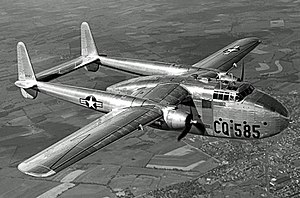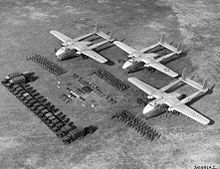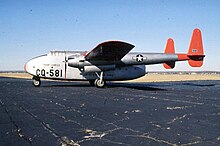
The Boeing 727 is an American narrow-body airliner that was developed and produced by Boeing Commercial Airplanes. After the heavier 707 quad-jet was introduced in 1958, Boeing addressed the demand for shorter flight lengths from smaller airports. On December 5, 1960, the 727 was launched with 40 orders each from United Airlines and Eastern Air Lines. The first 727-100 rolled out on November 27, 1962, first flew on February 9, 1963, and entered service with Eastern on February 1, 1964.
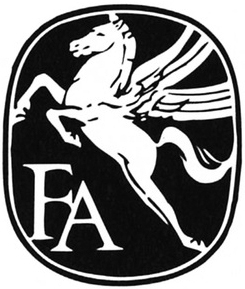
Fairchild was an American aircraft and aerospace manufacturing company based at various times in Farmingdale, New York; Hagerstown, Maryland; and San Antonio, Texas.

The Aermacchi or Macchi MB-326 is a light military jet trainer designed and produced by the Italian aircraft manufacter Aermacchi. It is one of the most commercially successful aircraft of its type, being bought by more than 10 countries and produced under licence in Australia, Brazil and South Africa.

The Fokker F27 Friendship is a turboprop airliner developed and manufactured by the Dutch aircraft manufacturer Fokker. It is the most numerous post-war aircraft manufactured in the Netherlands; the F27 was also one of the most successful European airliners of its era.
The Lockheed Model 10 Electra is an American twin-engined, all-metal monoplane airliner developed by the Lockheed Aircraft Corporation in the 1930s to compete with the Boeing 247 and Douglas DC-2. The type gained considerable fame as one was flown by Amelia Earhart on her ill-fated around-the-world expedition in 1937.

The Fairchild C-123 Provider is an American military transport aircraft designed by Chase Aircraft and built by Fairchild Aircraft for the U.S. Air Force. In addition to its USAF service, which included later service with the Air Force Reserve and the Air National Guard, it went on to serve the U.S. Coast Guard and various air forces in Southeast Asia. During the War in Vietnam, the C-123 was used to deliver supplies, to evacuate the wounded, for agent insertions behind enemy lines, and was also used to spray Agent Orange.

The Lockheed JetStar is a business jet produced from the early 1960s to the 1970s. The JetStar was the first dedicated business jet to enter service, as well as the only such airplane built by Lockheed. It was also one of the largest aircraft in the class for many years, seating ten plus two crew. It is distinguishable from other small jets by its four engines, mounted on the rear of the fuselage, and the "slipper"-style fuel tanks fixed to the wings.

The Fairchild C-119 Flying Boxcar was an American military transport aircraft developed from the World War II-era Fairchild C-82 Packet, designed to carry cargo, personnel, litter patients, and mechanized equipment, and to drop cargo and troops by parachute. The first C-119 made its initial flight in November 1947, and by the time production ceased in 1955, more than 1,100 had been built.

The Boeing C-108 Flying Fortress was an American transport aircraft used during World War II. Four were converted from B-17 Flying Fortress heavy bombers.
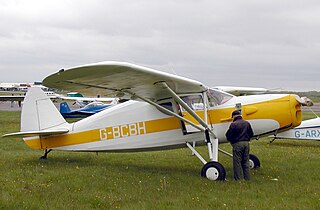
The Fairchild Model 24, also called the Fairchild Model 24 Argus and UC-61 Forwarder, is a four-seat, single-engine monoplane light transport aircraft designed by the Fairchild Aviation Corporation in the 1930s. It was adopted by the United States Army Air Corps as UC-61 and also by the Royal Air Force. The Model 24 was itself a development of previous Fairchild models and became a successful civil and military utility aircraft.

The Lockheed C-141 Starlifter is a retired military strategic airlifter that served with the Military Air Transport Service (MATS), its successor organization the Military Airlift Command (MAC), and finally the Air Mobility Command (AMC) of the United States Air Force (USAF). The aircraft also served with airlift and air mobility wings of the Air Force Reserve (AFRES), later renamed Air Force Reserve Command (AFRC), the Air National Guard (ANG) and, later, one air mobility wing of the Air Education and Training Command (AETC) dedicated to C-141, C-5, C-17 and KC-135 training.
Sherman Mills Fairchild was an American businessman and investor who founded over 70 companies, including Fairchild Aviation, Fairchild Industries, and Fairchild Camera and Instrument. Fairchild made significant contributions to the aviation industry and was inducted into the National Aviation Hall of Fame in 1979. His Semiconductor Division of Fairchild Camera played a defining role in Silicon Valley. He held over 30 patents for products ranging from the silicon semiconductor to the 8-mm home sound motion-picture camera. Fairchild was responsible for inventing the first synchronized camera shutter and flash as well as developing technologies for aerial cameras that were later used on the Apollo Missions.

The de Havilland DH.104 Dove is a British short-haul airliner developed and manufactured by de Havilland. The design, which was a monoplane successor to the pre-war Dragon Rapide biplane, came about from the Brabazon Committee report which, amongst other aircraft types, called for a British-designed short-haul feeder for airlines.

The Flight of the Phoenix is a 1965 American survival drama film produced and directed by Robert Aldrich, based on the 1964 novel of the same name by English author Elleston Trevor. The story follows a small group of men struggling to survive their aircraft's emergency landing in the Sahara. It stars an ensemble cast, with James Stewart, Richard Attenborough, Peter Finch, Hardy Kruger, Ernest Borgnine, Ian Bannen, Ronald Fraser, Christian Marquand, Dan Duryea and George Kennedy.

The Fairchild XC-120 Packplane was an American experimental modular aircraft first flown in 1950. It was developed from the company's C-119 Flying Boxcar, and was unique in the unconventional use of removable cargo pods that were attached below the fuselage, instead of possessing an internal cargo compartment.

Hill Aerospace Museum is a military aviation museum located at Hill Air Force Base in Roy, Utah. It is dedicated to the history of the base and aviation in Utah.

The Tallmantz Phoenix P-1 was an FAA-certified one-off aircraft built for the 1965 film production The Flight of the Phoenix and used in the picture's final aerial sequences. Its pilot Paul Mantz was killed in an accident during a touch-and-go maneuver to simulate a takeoff, after which the plane was replaced by a crudely modified North American O-47A.

The Fairchild 71 was an American high-wing monoplane passenger and cargo aircraft built by Fairchild Aircraft and later built in Canada by Fairchild Aircraft Ltd. (Canada) for both military and civilian use as a rugged bush plane.

The Fairchild 82 and the 34-42 Niska were a family of utility aircraft produced in Canada in the mid-1930s, based on designs by Fairchild Aircraft Ltd. (Canada)'s parent company in the United States.

The Hagerstown Aviation Museum is an aviation museum at the Hagerstown Regional Airport in Hagerstown, Maryland. It is focused on the history of the Fairchild Aircraft Corporation.
